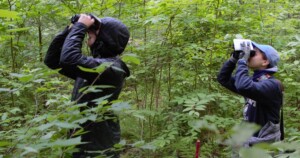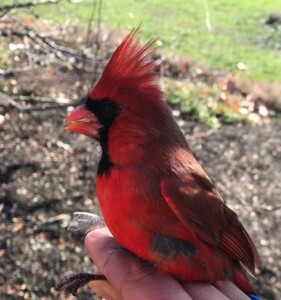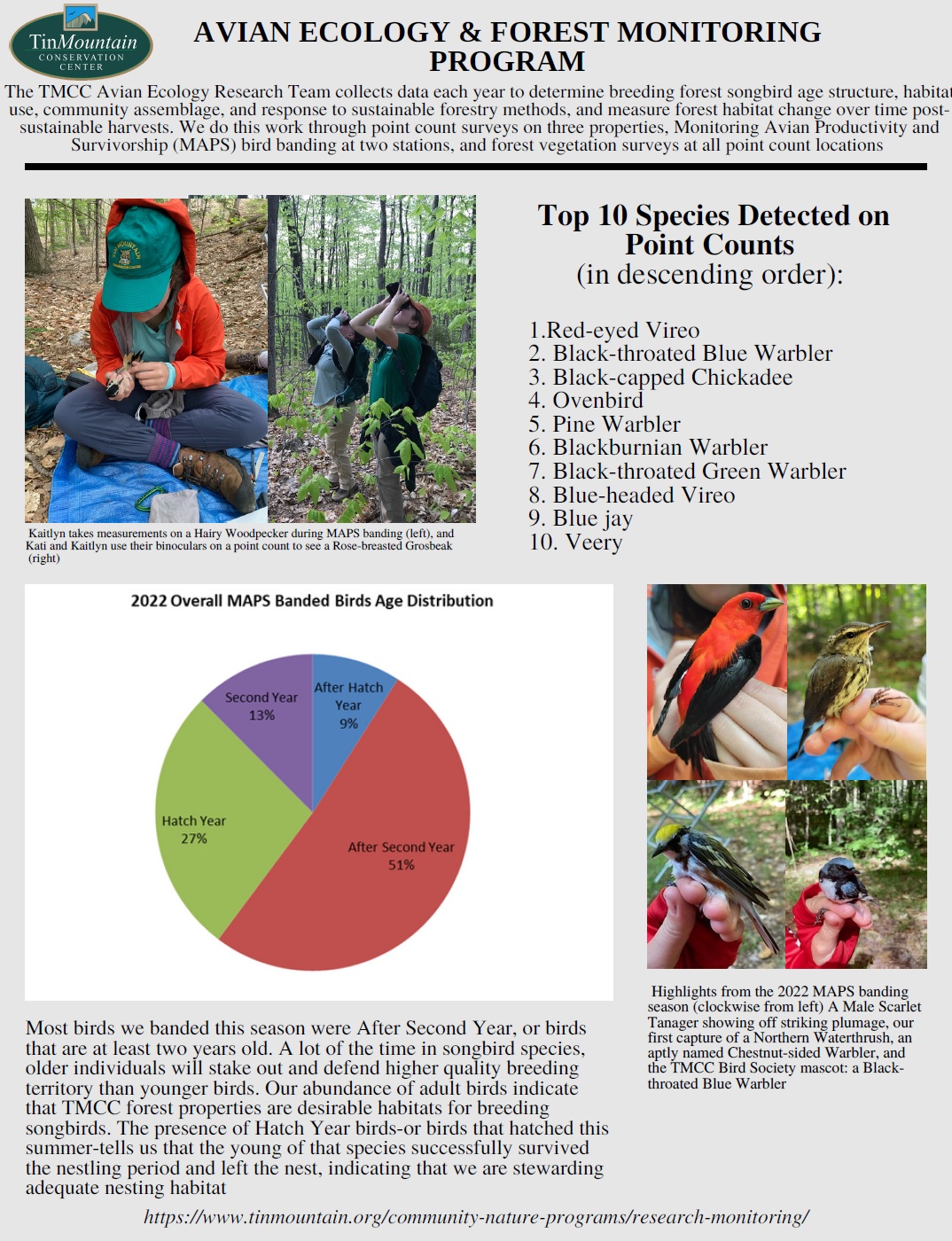View a full summary of the 2022 field season HERE
Avian Research
Tin Mountain Conservation Center has been monitoring bird populations in the Mount Washington Valley since the spring of 2008. Over the years, we have developed several long term monitoring projects that examine the ecology of migrating, breeding, and resident birds throughout their entire annual cycle. Our avian research can be divided into several sections:

photo credit: Sam Mason
Breeding Bird Surveys: During the summer months between May-July, we conduct point count surveys at 70 point count locations at our 138-acre Rockwell Sanctuary and Nature Learning Center located in Albany, NH and at the Conway, NH Bear Paw Timberlands, a 459-acre forested area managed with selective timber cuts for wildlife habitat management. With over ten years of survey data, we are able to monitor changes in avian communities and populations over long stretches of time.
Forest Ecological Monitoring: Each year after breeding bird surveys wrap up, we add to our database of forest ecology information by collecting data about the canopy, mid-story, groundcover, and coarse wood material compositions at forest plots associated with our point count locations. With this data, we are able to study the habitat associations of breeding and migrating songbirds, determine how forest composition and structure changes over time after selective tree cuts, and how wildlife populations respond to these changes.
Resident Bird Study: To get a better understanding of an understudied portion of songbird life history, we conduct weekly point counts year-round at the Rockwell Sanctuary. Through this work, we are able to measure avian communities throughout all seasons, and study how their behavior and habitat use changes over the course of a year.
 Banding: In addition to continuous weekly point counts, in the winter months we color-band Black-capped Chickadees, White-breasted Nuthatches, Red-breasted Nuthatches, and Dark-eyed Juncos to take an in-depth look at how individual birds and species adjust their territories according to the time of year, how they interact in mixed-species flocks, and whether they return to the same wintering ranges year after year. We band locally breeding songbird species in our forest sanctuaries during the summer months to contribute to international demographic databases and study summer species assemblages and population trends.
Banding: In addition to continuous weekly point counts, in the winter months we color-band Black-capped Chickadees, White-breasted Nuthatches, Red-breasted Nuthatches, and Dark-eyed Juncos to take an in-depth look at how individual birds and species adjust their territories according to the time of year, how they interact in mixed-species flocks, and whether they return to the same wintering ranges year after year. We band locally breeding songbird species in our forest sanctuaries during the summer months to contribute to international demographic databases and study summer species assemblages and population trends.
Want to know more? Click here to view our intern/ research publications.
